

WHAT’S AN AKRO IMPERIAL?
By George Sourlis
Even experienced Akro collectors are sometimes confused about Akro’s
Imperial marbles. The reason is that
many different kinds of Akro marbles have been found in Akro 25-count Imperial
boxes.
In Plate 1 is shown part of an Akro introductory promotional letter
composed in January 23, 1929 – the birthday of the Imperial.
One line therein precisely describes Imperials:
“---a combination of the wonderful hues of Cornealean and Moonie
Agate---“. Cornealean is oxblood,
and Moonies are made from opalescent white glass.
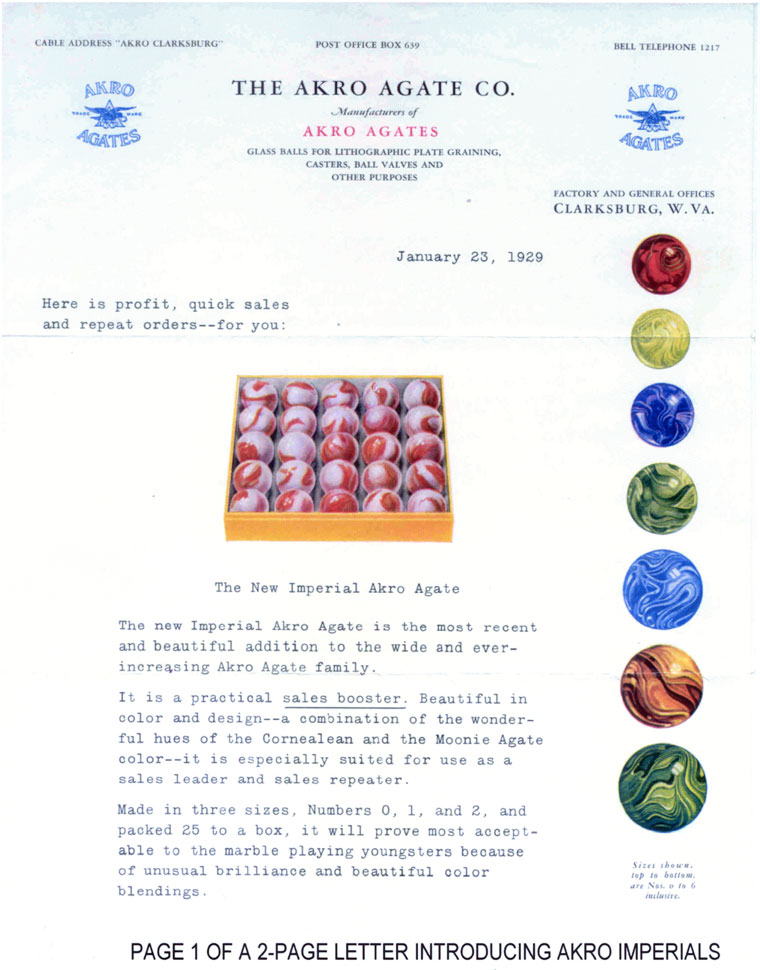
PLATE 1
The box in Plate 2 is an example having marbles with these colors.
Note that some of the marbles are swirls, and some are corkscrews.
I believe that these corkscrews are some of the earliest that Akro made.
Plate 2 picture goes
here.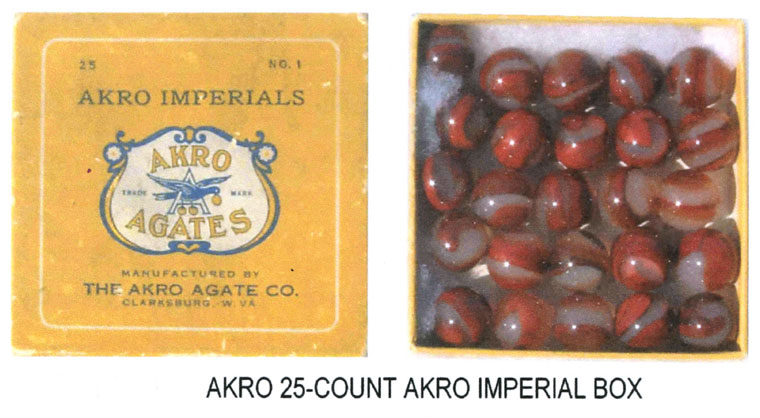
PLATE 2
In the mid-1990s an Imperials box was found containing marbles like those
in the group without a box in Plate 3.
After that, many collectors thought that these marbles were Imperials.
The name stuck, and many still call them Imperials.
They do resemble the original description, but they are red-orange on a
mossy base. They do fit Akro’s
description of an Ace, “a marble with a thin strip of opalescent glass on a
translucent white base”. (A 2-color corkscrew, one color of which is a
translucent white base) I have seen
a small Akro salesman’s box with one of these in a column marked “ACE”.
So these Aces were sometimes used to fill Akro Imperials boxes.
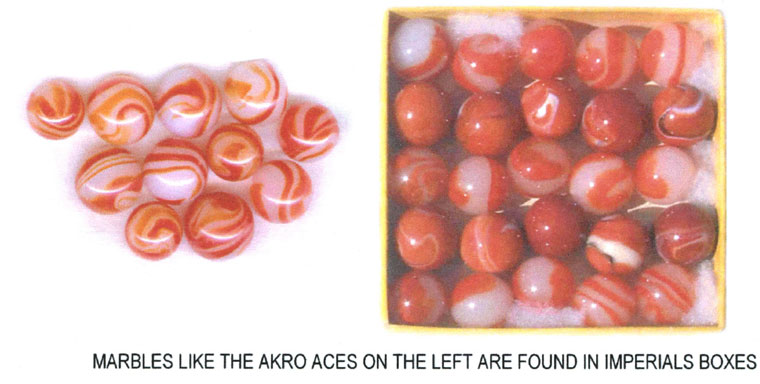
PLATE 3
In Plate 4 is an Imperials box used by a salesman.
The marbles are Akro’s familiar oxbloods:
silver, lemonade, carnelian, blue, and egg yolk oxbloods.
In addition limeade and orange oxbloods are shown in an Imperials box in
Hardy’s first book on page 21. These
7 types of oxbloods strongly resemble the original description.
They have oxbloods on a translucent white base.
Each has 1 extra color. I
have seen more Imperials boxes packed with these oxbloods than with any other
type of marble.
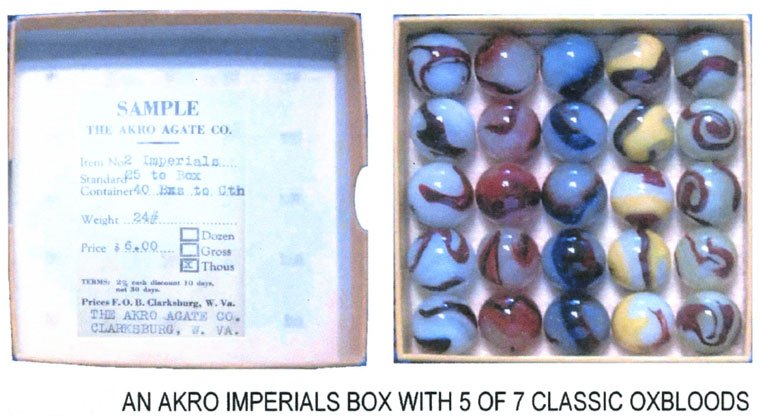
PLATE 4
Now that we have it all figured out look at the surprise in Plate 5.
This is a No. 1 Imperial box containing beautiful Akro Tri-colors.
Plate 5 picture goes
here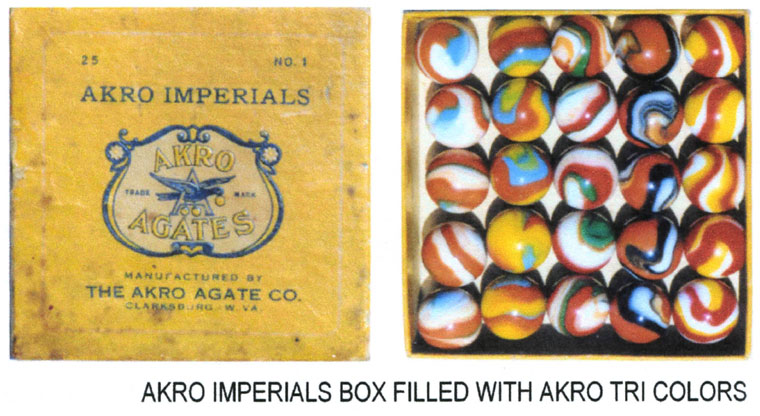
PLATE 5
The only examples that fit the Jan. 1929 brochure are the ones in Plate
2. As time passed, Akro changed its
definition of the Imperial without stating it.
No wonder there is so much confusion among collectors.
The only thing Imperials have in common is that for collectors they are
highly desirable.
I would like to thank Hansel DeSousa and Eddie Schubert for allowing me
to use pictures of their boxes in this article.